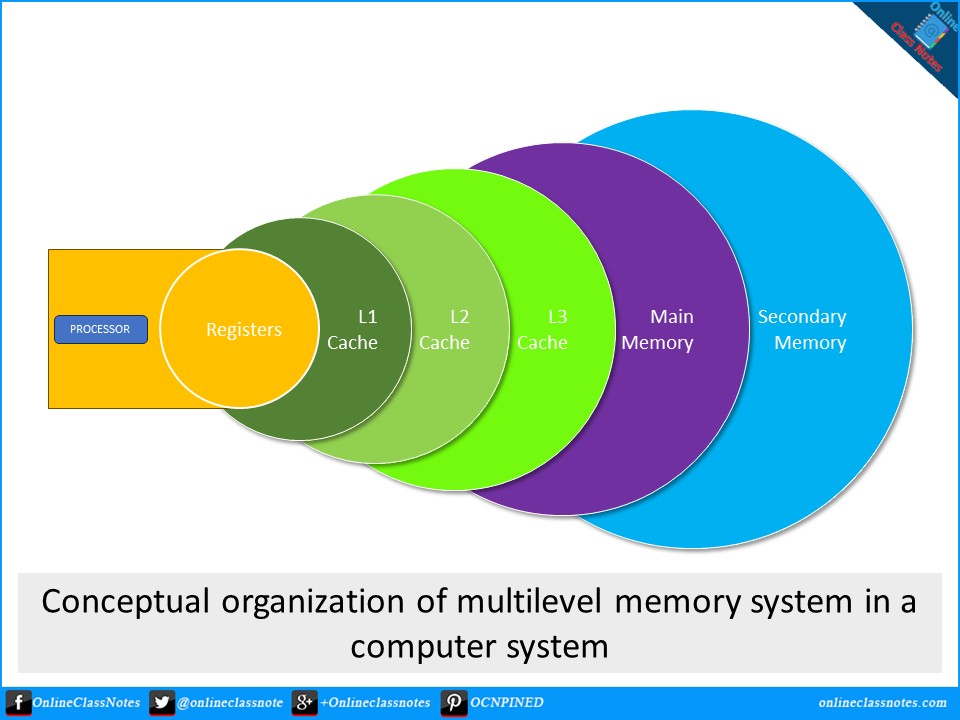Multilevel Memory Systems
For a CPU to perform at its maximum potential, it needs rapid and continuous access to memory. However, high-speed memory is costly, which necessitates the use of various levels of memory that balance performance and cost. Here’s an overview of the different types of memories in a computer system and their organization in a multilevel memory hierarchy.
Below is the flow-diagram of the conceptual organization of multilevel memories in a computer system.

Levels of Memory in a Computer System
CPU-Registers
CPU registers are high-speed storage locations used for temporarily holding instructions and data during processing. Typically, a register file includes around 32 registers, each of which can be accessed within a single clock cycle, taking just a few nanoseconds. These registers enable the CPU to operate efficiently by quickly accessing the data it needs.
Read More:
- Write short notes on general purpose registers (AX,BX,CX,DX,SP,BP,SI,DI) and ALU in Intel 8086 microprocessor
- What are the Purposes of Segment Registers in Intel 8086 Microprocessor
Cache Memory
Cache memory is a small, high-speed memory layer situated between the CPU registers and the main memory. Although it has a lower capacity than main memory, its access time is significantly faster. Cache memory can be integrated into a single IC or the CPU itself, making it more expensive but highly efficient. Modern systems can have up to 8 MB of cache memory, which helps bridge the speed gap between the CPU registers and the main memory.
Read More:
- 5 Differences between RAM and Cache Memory « OnlineClassNotes
- Explain the purpose and function of CPU caches. What are the different levels of cache memory, and how do they impact CPU performance? « OnlineClassNotes
- Types of computer memory based on access methods « OnlineClassNotes
Main or Primary Memory
Main memory, also known as primary memory, is a large and relatively fast memory that stores active data and programs. The CPU accesses this memory directly using load and store instructions. Despite being built with similar technology to the register file, main memory has a longer access time due to its larger capacity and physical separation from the CPU. Current systems typically support up to 8 GB of main memory, with access times spanning multiple clock cycles.
Secondary Memory
Secondary memory offers vast storage capacity but operates much slower than primary memory, cache, and registers. It stores large data files, programs, and files not needed continuously by the CPU, also serving as overflow storage when main memory is full. Secondary memory includes devices like magnetic disks and optical disks, which are slow due to their mechanical nature. Access times are measured in milliseconds, with capacities reaching up to 1 terabyte (1024 GB).
The organization of a multilevel memory system in a computer balances cost and performance by utilizing different types of memory. Each level plays a crucial role in ensuring that the CPU has efficient access to the data it needs, from the ultra-fast CPU registers to the vast storage of secondary memory. Understanding this hierarchy helps in optimizing system performance and managing costs effectively.